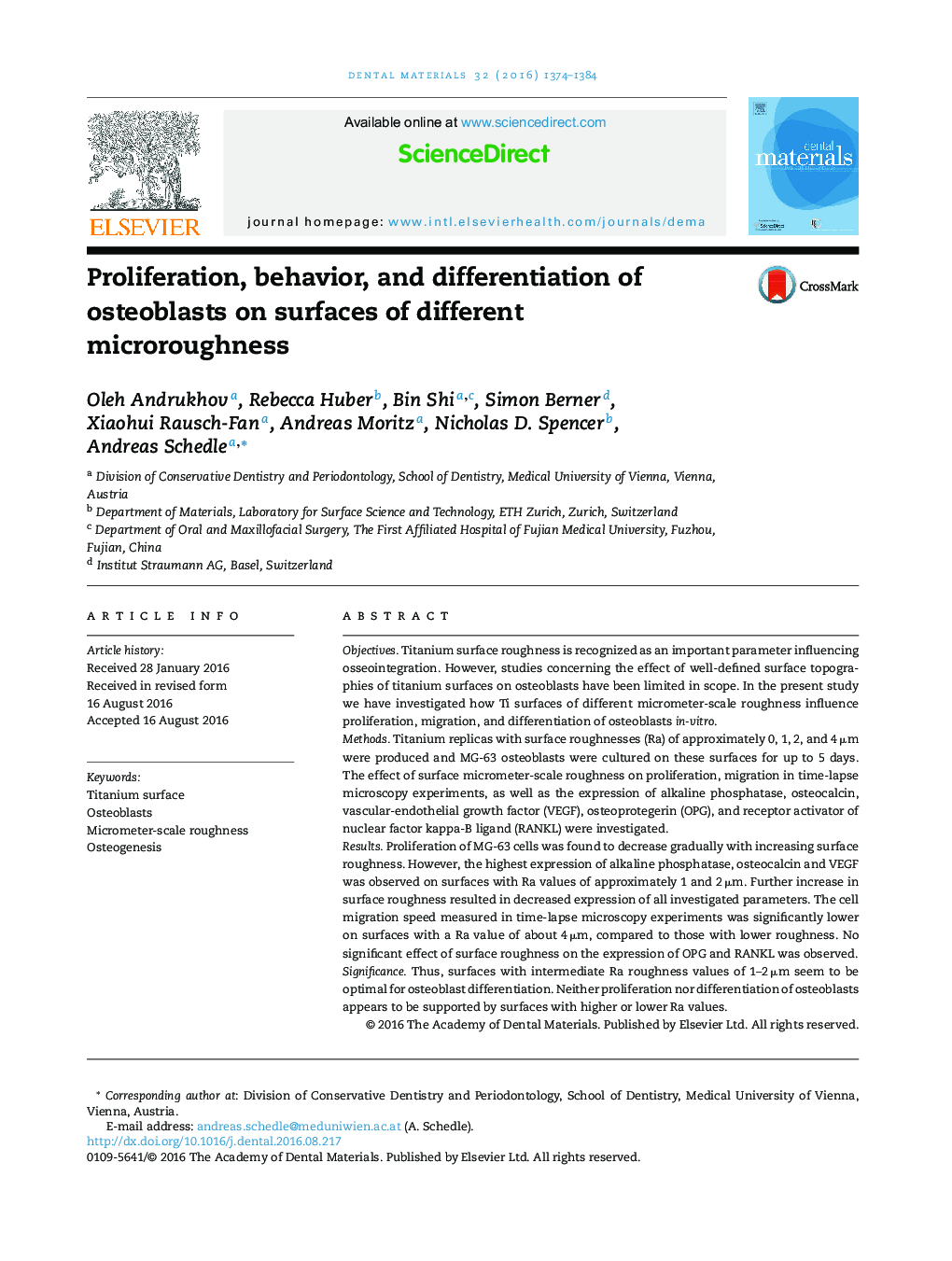| کد مقاله | کد نشریه | سال انتشار | مقاله انگلیسی | نسخه تمام متن |
|---|---|---|---|---|
| 5433199 | 1398057 | 2016 | 11 صفحه PDF | دانلود رایگان |
- Role of different roughness components in the healing after implantation is scarce.
- Surfaces with similar micronscale roughness might differ in spatial roughness.
- The role of different roughness components in osseointegration must be studied.
- Surfaces differing in micronscale roughness - not in other parameters - were used.
- Surfaces with Ra parameters of about 1-2 μm are optimal for osteblasts.
ObjectivesTitanium surface roughness is recognized as an important parameter influencing osseointegration. However, studies concerning the effect of well-defined surface topographies of titanium surfaces on osteoblasts have been limited in scope. In the present study we have investigated how Ti surfaces of different micrometer-scale roughness influence proliferation, migration, and differentiation of osteoblasts in-vitro.MethodsTitanium replicas with surface roughnesses (Ra) of approximately 0, 1, 2, and 4 μm were produced and MG-63 osteoblasts were cultured on these surfaces for up to 5 days. The effect of surface micrometer-scale roughness on proliferation, migration in time-lapse microscopy experiments, as well as the expression of alkaline phosphatase, osteocalcin, vascular-endothelial growth factor (VEGF), osteoprotegerin (OPG), and receptor activator of nuclear factor kappa-B ligand (RANKL) were investigated.ResultsProliferation of MG-63 cells was found to decrease gradually with increasing surface roughness. However, the highest expression of alkaline phosphatase, osteocalcin and VEGF was observed on surfaces with Ra values of approximately 1 and 2 μm. Further increase in surface roughness resulted in decreased expression of all investigated parameters. The cell migration speed measured in time-lapse microscopy experiments was significantly lower on surfaces with a Ra value of about 4 μm, compared to those with lower roughness. No significant effect of surface roughness on the expression of OPG and RANKL was observed.SignificanceThus, surfaces with intermediate Ra roughness values of 1-2 μm seem to be optimal for osteoblast differentiation. Neither proliferation nor differentiation of osteoblasts appears to be supported by surfaces with higher or lower Ra values.
196
Journal: Dental Materials - Volume 32, Issue 11, November 2016, Pages 1374-1384
